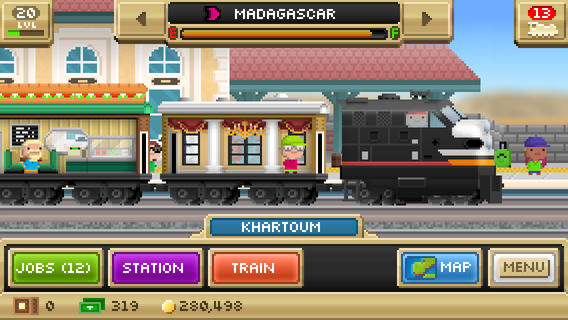Developer: Simogo
Compatible with: iPhone, iPad, iPod Touch
Requires: iOS 5.1
Price: $3.99
Available: here
Developer Simogo is a company on a mission. Their project history showcases some of the most artistically challenging, creative, and entertaining apps ever released, as they seem to be dead set on winning the race to make a gaming app that showcases the full potential of mobile devices, even when it feels like they’re the only ones really in the running. While the music/stealth hybrid game “Beat Sneak Bandit” showed they were getting warmer, and the beautifully morbid adventure “Year Walk” almost got there, it’s “Device 6” that will likely go down as Simogo’s magnum opus, and one of the finest mobile experiences ever made.
I mentioned before that it felt like Simogo was aiming for the ultimate mobile gaming experience, yet somehow it doesn’t feel right calling “Device 6” a gaming app, or really trying to define it at all. On a very basic level it’s a callback to the old text adventures like “Zork” that saw you type in basic commands to advance a story. Your story here is that of a woman named Anna who wakes up on a mysterious island, unsure of how she got there, or what to do next. It’s a tired set up but, to be honest, then again so are text based adventure games. This makes the two something of an oddly appropriate match, but probably doesn’t help to explain why “Device 6” is so incredible.
The answer to that lies in the storytelling. “Device 6” doesn’t just tell a tale that you occasionally advance with basic commands, but rather presents a story that constantly requires you to interact with it in significant ways. Sometimes this comes in the form of “choose your own adventure” style moments that diverts the tale onto slightly different paths, but more often it’s in the way the game requires you to participate in mini-game like moments where you are momentarily put into the shoes of the character to solve a variety of puzzles and overcome other obstacles. Rarely taking the same form twice, these interludes of interactivity are, without exception, incredibly challenging and unbelievably creative moments that go a long way to breathing new life into the old text adventure format not just because they provide a game like break from the reading, but rather because they enhance the story in a way that allows it to evolve to a level far beyond what is possible with just printed words.
Were “Device 6” to stop there, though, it would probably only find itself atop the growing heap of interactive story games on mobile devices. However, its trump card comes in the way it formats the text adventure. For instance, there’s a point in the story where you encounter a staircase. At that moment, the text physically diverges into both a downstairs and upstairs path which you’ll have to choose between. Another example of this imaginative style comes when you walk through a corridor, and the words suddenly form into a shifting single file line that requires you to tilt your device to keep up with them, simulating the feeling of walking down the same corridor Anna does. These may sound kind of gimmicky, but combined with the constant stream of timely visual elements and puzzles, they help to make “Device 6” the most engaging novel you’ll ever read.
“Device 6” reminds me of another recent release “The Stanley Parable” in that both showcase new, and previously unthinkable, ways of telling a story within an interactive medium. Where “Device 6” differs though is that it doesn’t feel like an isolated experience, or test run to a new method of storytelling, but rather a fully realized showcase that might just redefine how books are formatted in the digital age, or even create an entertainment medium that we don’t even associate with traditional books. That might sound like a bold statement, but the confidence and skill that “Device 6” exhumes when showcasing its unique methods is all of the reference needed to justify it’s potential as a game changer. Like watching a hotshot backup on your favorite football team come in and win an impossible game for the aging starter, once you get a taste of “Device 6” it’s clear that there is no going back.
Book, game, something in-between…I don’t care what you call “Device 6,” because I’m just glad it’s on the app store so I can talk about it here and tip you off to the moment when interactive storytelling shed nearly all of its conventions, and the idea of the capabilities of e-books changed forever. Then again even if “Device 6” doesn’t change the storytelling world, it still stands as a one of a kind experience without equal in concept or quality on the app store. For want of a greater honor to provide it, I humbly name “Device 6” my app of the week.
You can follow us on Twitter and Facebook for content updates. Also, sign up for our email list for weekly updates and check us out on Google+ as well.















